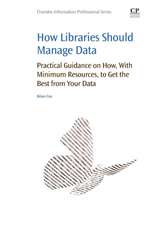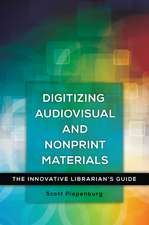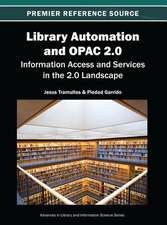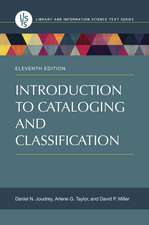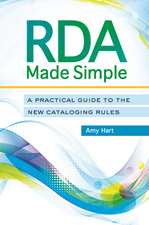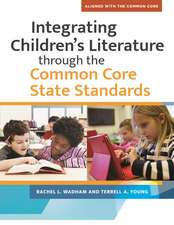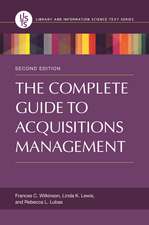Evaluating Demand-Driven Acquisitions
Autor Laura Costelloen Limba Engleză Paperback – 4 oct 2016
This book helps librarians and practitioners evaluate their existing demand-driven programs and make adjustments that could decrease costs or expand existing strategies. It is also suitable for librarians with new or emerging demand-driven programs to use as a framework for developing ongoing assessment programs or evaluating pilot programs.
- Provides a comprehensive and up-to-date assessment of demand driven acquisitions research
- Separates research findings by evaluation criteria for ease of use
- Serves as a reference for diverse libraries, including academic, public, and corporate libraries
- Synthesizes the most current research on this increasingly popular library strategy
Preț: 327.57 lei
Preț vechi: 356.06 lei
-8% Nou
Puncte Express: 491
Preț estimativ în valută:
62.69€ • 68.07$ • 52.66£
62.69€ • 68.07$ • 52.66£
Carte tipărită la comandă
Livrare economică 15-29 aprilie
Preluare comenzi: 021 569.72.76
Specificații
ISBN-13: 9780081009468
ISBN-10: 0081009461
Pagini: 172
Dimensiuni: 152 x 229 x 19 mm
Greutate: 0.28 kg
Editura: ELSEVIER SCIENCE
ISBN-10: 0081009461
Pagini: 172
Dimensiuni: 152 x 229 x 19 mm
Greutate: 0.28 kg
Editura: ELSEVIER SCIENCE
Cuprins
Part I. Introduction to Demand-Driven Assessment
1. A Climate of Demand
2. Demand-Driven Acquisitions: Basic and Advanced Options
Part II. Discussion of the Research
3. Assessing for Cost
4. Assessing for Collection Diversity
5. Assessing for Collection Standards
6. Assessing for Usage,
7. Assessing for Workflow and Preservation
Part III. Special Considerations for Different Types of Libraries
8. Academic Libraries
9. Public Libraries
10. Other Types of Libraries
Part IV. Conclusion and Discussion
1. A Climate of Demand
2. Demand-Driven Acquisitions: Basic and Advanced Options
Part II. Discussion of the Research
3. Assessing for Cost
4. Assessing for Collection Diversity
5. Assessing for Collection Standards
6. Assessing for Usage,
7. Assessing for Workflow and Preservation
Part III. Special Considerations for Different Types of Libraries
8. Academic Libraries
9. Public Libraries
10. Other Types of Libraries
Part IV. Conclusion and Discussion

